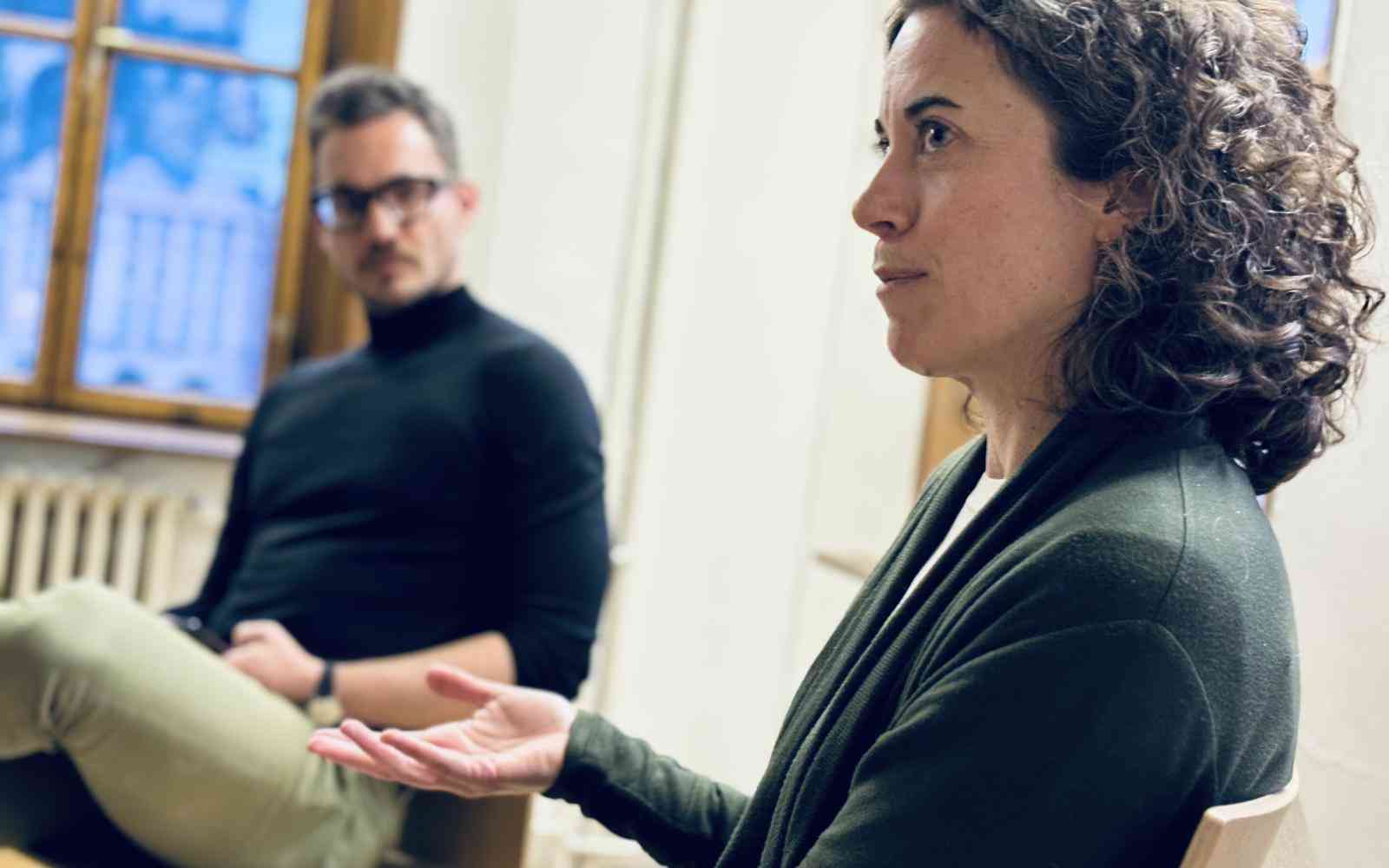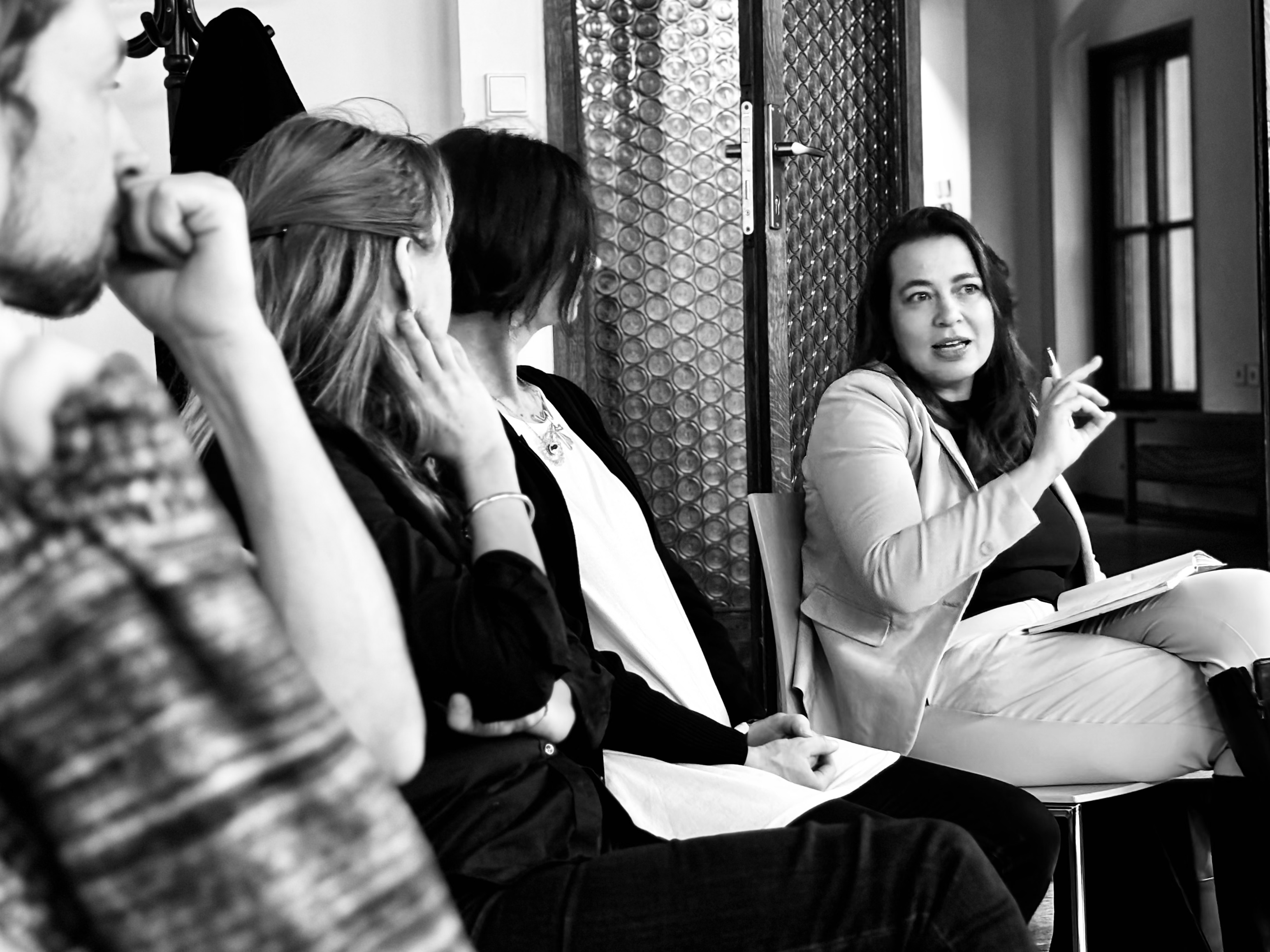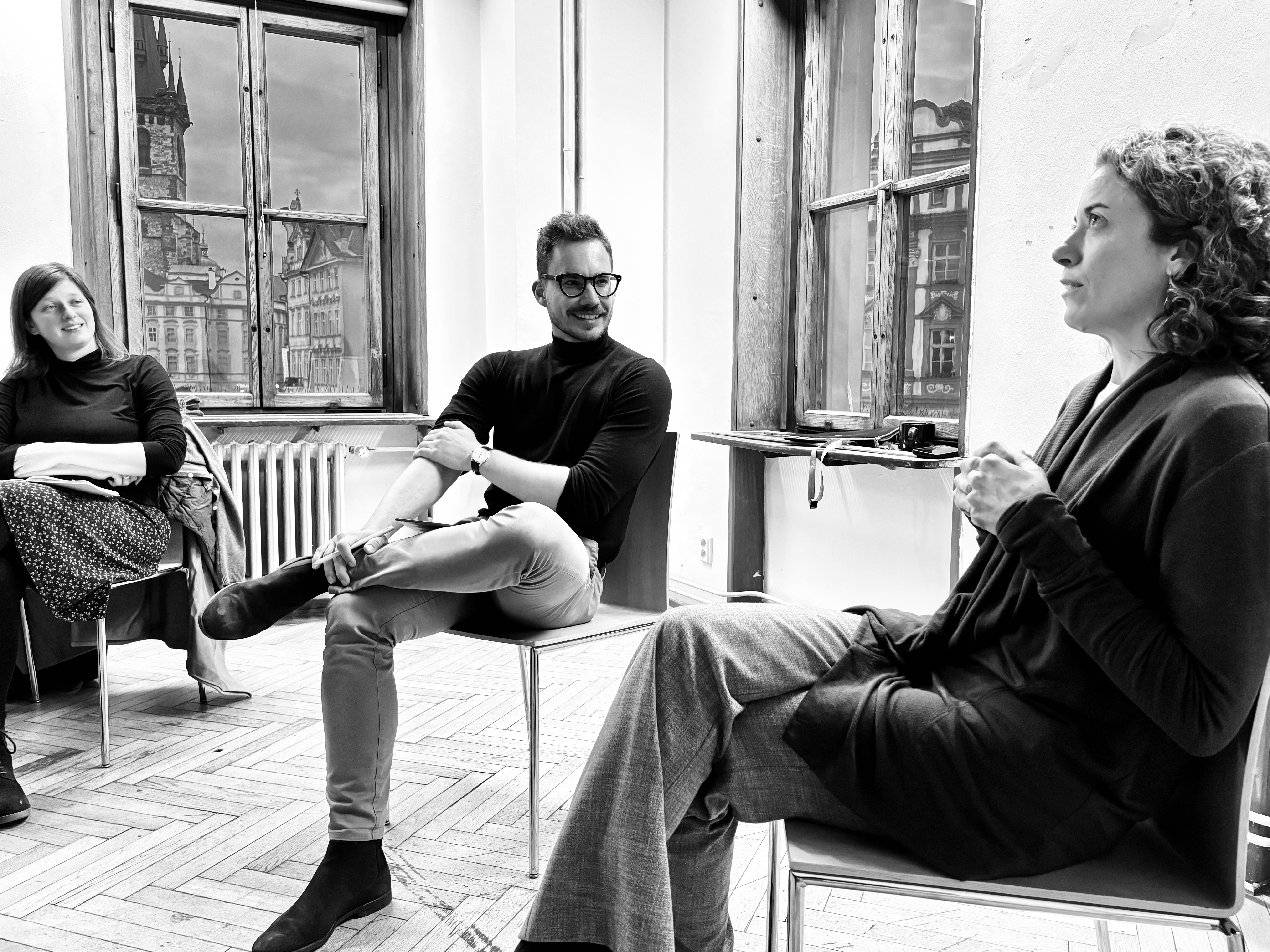Lydie Lake
Lydie Lake is a student of journalism and political science at George Washington University. She is an editorial intern with Transitions Media during her semester abroad.
A Recent Event Hosted by Ashoka Sheds Light on Empathy’s Role in Society
Talks of empathy and social change filled the room in an intimate conversation with Ashoka experts and event-goers, discussing the skill as a solution to societal issues.
Joined by a diverse audience of people who are coaches, caretakers, employees from Czech NGOs, or simply intrigued by the topic, Ashoka organized the event with Scout Institute to discuss how empathy contributes to social change, especially within Ashoka’s multiple initiatives.

“We were really looking at this issue as a shortcut, not as experts in empathy, but because we see this as being essential to change-making in the world,” said Danielle Goldstone, a senior adviser at Ashoka and the founding director of Ashoka’s global Empathy Initiative.
Founded in 2011, the Empathy Initiative brings together the thoughts of social entrepreneurs, experts, and educators from around the world who emphasize empathy as a necessary skill in today’s world. The parent initiative of Ashoka’s Start Empathy program and the Changemaker School Network, the Empathy Initiative stresses the necessity of teaching empathy to children in school.
Seeking to teach empathy as a “foundational skill” that can be learned among society to strive for social change in institutions, Ashoka defines empathy as “understanding the feelings and perspectives of others and using that understanding to guide our response”, Goldstone explained.
Goldstone opened the conversation by describing two primary types of empathy: noncognitive and cognitive. Noncognitive empathy is an uncontrollable feeling, like when you can feel the pain of someone who just stubbed their toe, she explained, while cognitive empathy is developed over time as you gather a certain perspective relevant to your own life.
With two different types of empathy described by Goldstone, there is also a difference between healthy and unhealthy empathy, which is often seen as taking on the emotional baggage of others, causing burnout.
“You can see the emotions, but you are not paralyzed by it, and you can manage it,” said event-attendee Petra Wünschová from Centrum Locika, a Czech NGO that aids child victims or witnesses of domestic violence.
“There is healthy empathy and there is another extreme, where you feel so much empathy for everyone that you are in danger of burnout,” Petra Wünschová said.

There’s another step to empathy, though, Goldstone explained, which is action. A “piece of the puzzle” in empathy is not only understanding the perspectives of others but adjusting the way you respond accordingly to the situation.
“This action piece is really key to managing and showing that we can actually guide our questions, our actions,” said Radoslav Pittner, the event’s moderator and the co-director of Ashoka CZ&SK.
Goldstone added that some define empathy as compassion, which is “essentially empathy in action.”
“It's that aspect of using that empathy, using our understanding of what somebody might be experiencing and feeling to hopefully take constructive action in the world or in your conversation,” she said.
The second piece of the conversation revolved around social innovation, which Goldstone described as “identifying new ways to address social problems.”
The difference between effective and ineffective social innovation, Goldstone explained, is empathy. She said it requires a specific skill set to become a social innovator and perform applied empathy by understanding the incentives of everyone involved in a problem and realigning those incentives to solve it.
“What the best social innovators do is that instead of reacting, they respond,” Goldstone said.
Empathy can be learned from a young age as kids grow and develop a capacity for it, but if that skill is not nurtured and practiced in addition to its development, Goldstone said, it will not be able to effectively address problems in the future.
Goldstone discussed the example of KIPP Academy — the Knowledge is Power Program — which was created by Ashoka fellow David Levin as a college preparatory program. Students in these schools were disciplined “robots” with the school’s effective models to prepare them for standardized testing, but according to Goldstone, many students dropped out once they reached university. Lacking lessons in social and emotional skills, the school revised its model to incorporate them for academic success beyond numbers and writing.

To further emphasize the impact of learning empathy at a young age, Ashoka has partnered with schools, parents, and youth organizations, spreading the idea that learning empathy is as important as reading, writing, and mathematical abilities.
“Empathy is an experiential thing, it cannot be taught the same way other subjects are like reading and math,” Goldstone said.
Another Ashoka fellow Mary Gordon, who founded the Roots of Empathy program, which specializes in building empathy in children, brought an infant into a classroom once a week to act as a “teacher” for one class period, Goldstone explained. The kids observe the silent infant’s interaction with the parent and discuss what they see. According to Goldstone, this program has had an impact on bullying reduction.
“We often don’t think of ourselves as having a lot of power, but we do in this day and age,” Goldstone said. “We can use that power to create positive change for the good of all.”